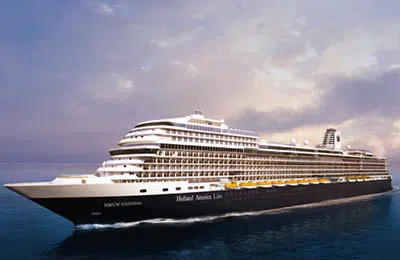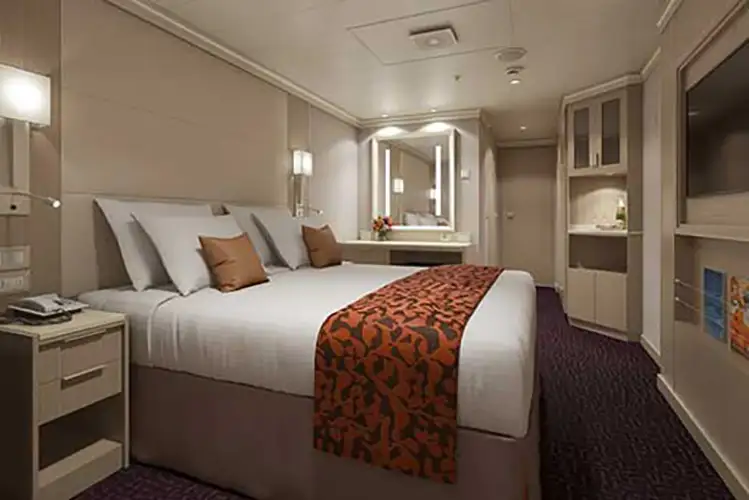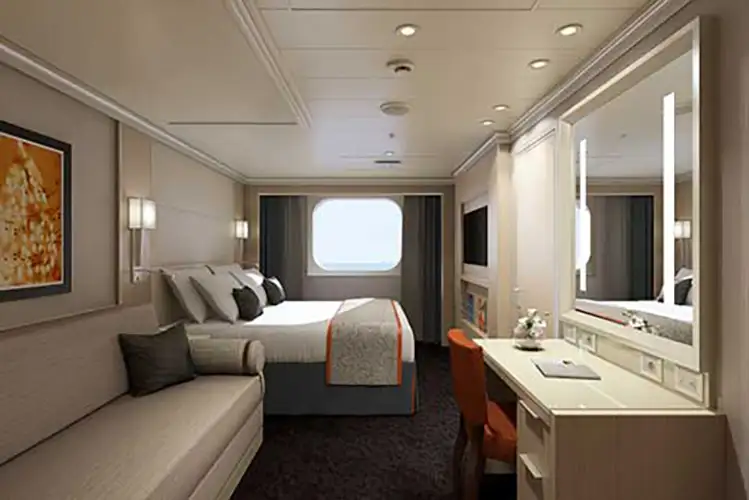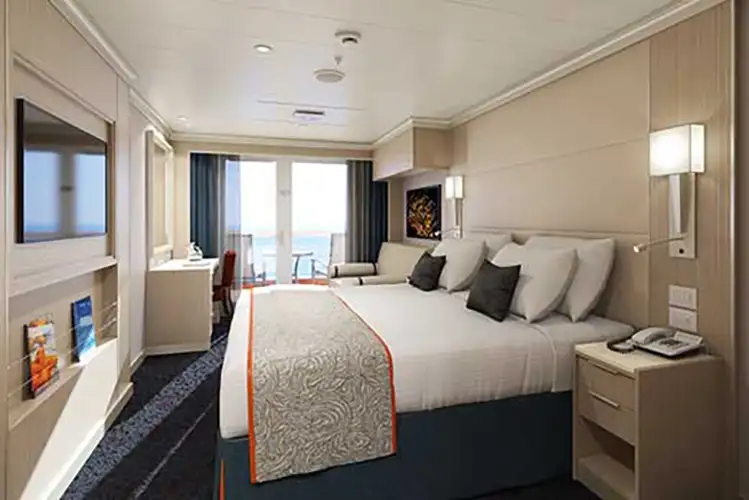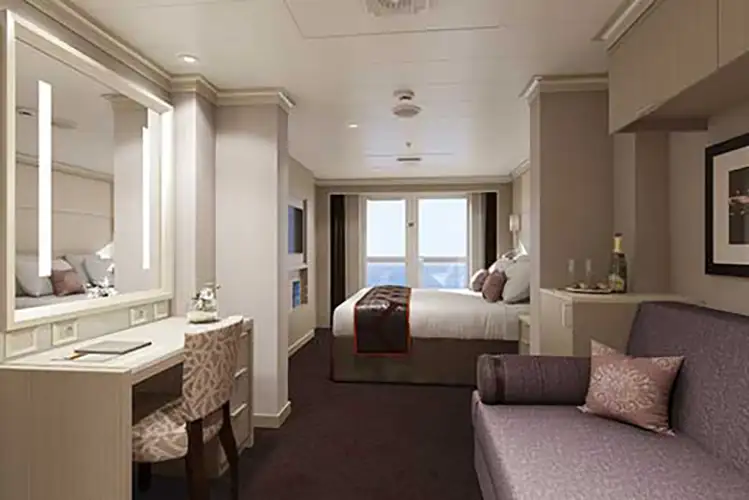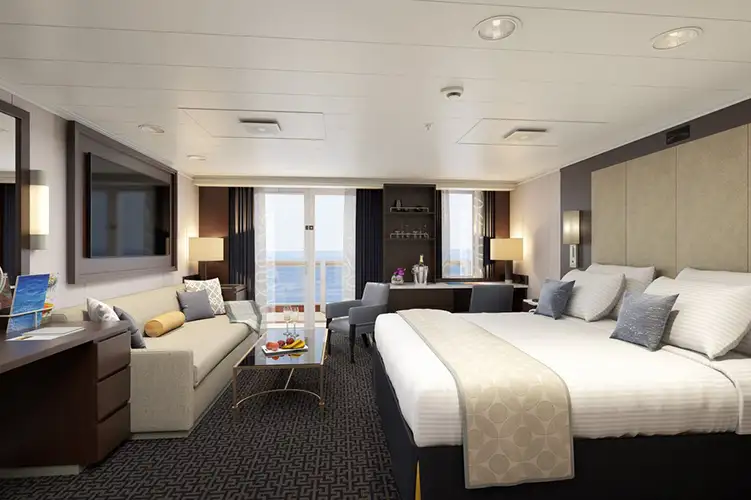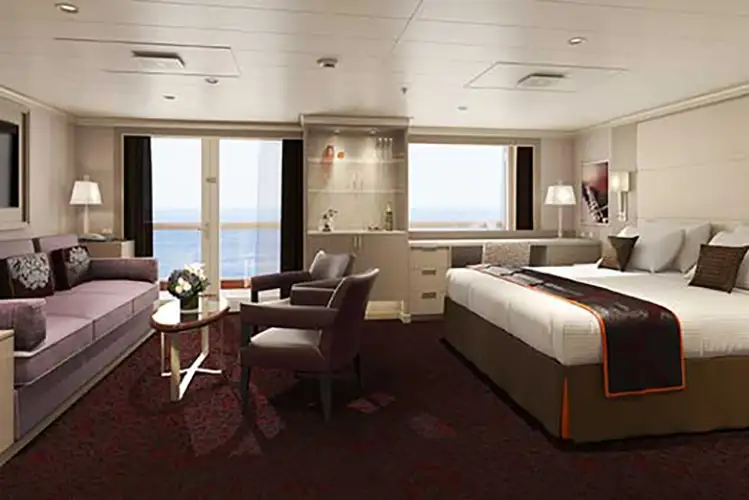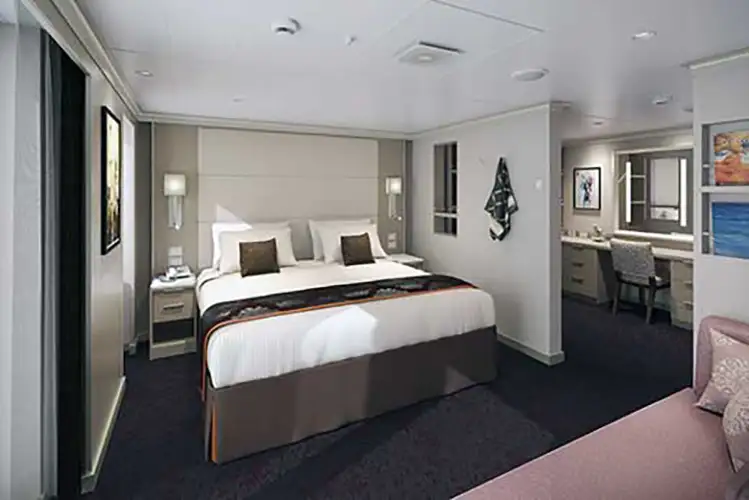Holland America Line Norwegian fjords: 28 nights from Rotterdam with Nieuw Statendam
Sep 19, 2026
Netherlands, Norway, United Kingdom, Spain, Portugal
Cruise itinerary
Departure Port: Rotterdam ➞
Landing: Rotterdam
-
Saturday, September 19, 2026 - 3:00 PMRotterdam
-
Sunday, September 20, 2026Navigation
-
Monday, September 21, 2026Navigation
-
Monday, September 21, 2026 8:00 AM - 5:00 PMEidfjord
-
Tuesday, September 22, 2026Navigation
-
Wednesday, September 23, 2026 8:00 AM - 5:00 PMAlesund
-
Thursday, September 24, 2026 8:00 AM - 5:00 PMTrondheim
-
Friday, September 25, 2026 8:00 AM - 5:00 PMAndalsnes
-
Sunday, September 27, 2026 9:00 AM - 6:00 PMStavanger
-
Tuesday, September 29, 2026 8:00 AM - not foundOslo
-
Wednesday, September 30, 2026Navigation
-
Wednesday, September 30, 2026 not found - 4:00 PMOslo
-
Thursday, October 1, 2026Navigation
-
Friday, October 2, 2026 7:00 AM - 6:00 PMDover
-
Saturday, October 3, 2026 7:00 AM - 3:00 PMRotterdam
-
Sunday, October 4, 2026Navigation
-
Monday, October 5, 2026Navigation
-
Tuesday, October 6, 2026Navigation
-
Wednesday, October 7, 2026 9:00 AM - 6:00 PMnavigation
-
Thursday, October 8, 2026 10:00 AM - 9:00 PMSanta Cruz De La Palma
-
Friday, October 9, 2026 8:00 AM - 11:00 PMSanta Cruz de Tenerife
-
Saturday, October 10, 2026 8:00 AM - 9:00 PMLas Palmas
-
Sunday, October 11, 2026 8:00 AM - 5:00 PMArrecife
-
Monday, October 12, 2026Navigation
-
Tuesday, October 13, 2026 8:00 AM - 5:00 PMLisbon
-
Wednesday, October 14, 2026Navigation
-
Thursday, October 15, 2026Navigation
-
Friday, October 16, 2026 7:00 AM - 6:00 PMDover
-
Saturday, October 17, 2026 7:00 AMRotterdam
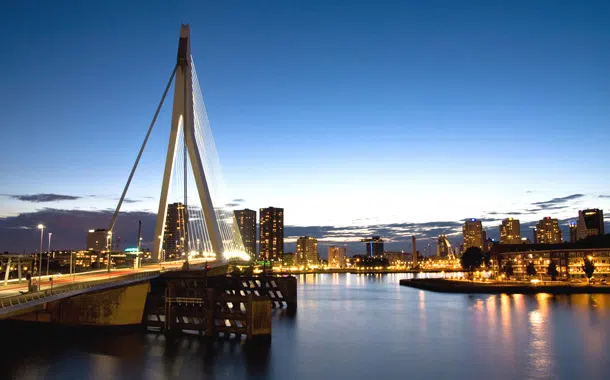
Rotterdam
Rotterdam has a booming energy, with an excellent nightlife, a multicultural community, a gritty arts scene and an offer of excellent museums.
Rotterdam, the Netherlands' 'second city', was heavily bombed during the Second World War and spent decades before reconstruction. You won't find the classic medieval Dutch architecture here – it was swept away along with the other debris and debris of war. In its place is an architectural aesthetic that is unique in Europe, a perpetually progressive approach to construction that is clearly a result of the city's post-war, postmodern philosophy. In fact, Rotterdam is known as a city of architecture. In the few square kilometers of the city center you have a complete overview of what the twentieth century produced in terms of modern architecture.

Eidfjord
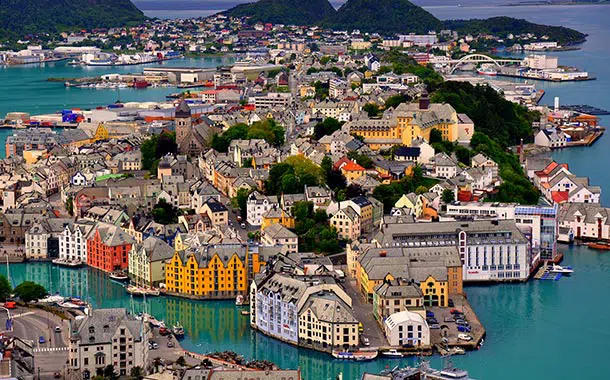
Alesund
It is a seaport, and it is known for its extraordinary concentration of Art Nouveau architecture which will make you discover a great variety of fanciful ornaments on the fronts of the buildings. Climb the 418 steps to the top of Mount Aksla and you will be rewarded with an unforgettable panorama.
Ålesund is a natural starting point for an active holiday with a beautiful coastline and cliffs, deep valleys, fjords and spectacular mountains. It is also a great place for children, offering a series of exciting experiences for the whole family, from seeing the fish and penguins at the Atlanterhavsparken aquarium, to the exciting Barnas Lekeland Children's Playland, to travelling back in time at the open-air Sunnmøre Museum or the Nouveau Art Centre.
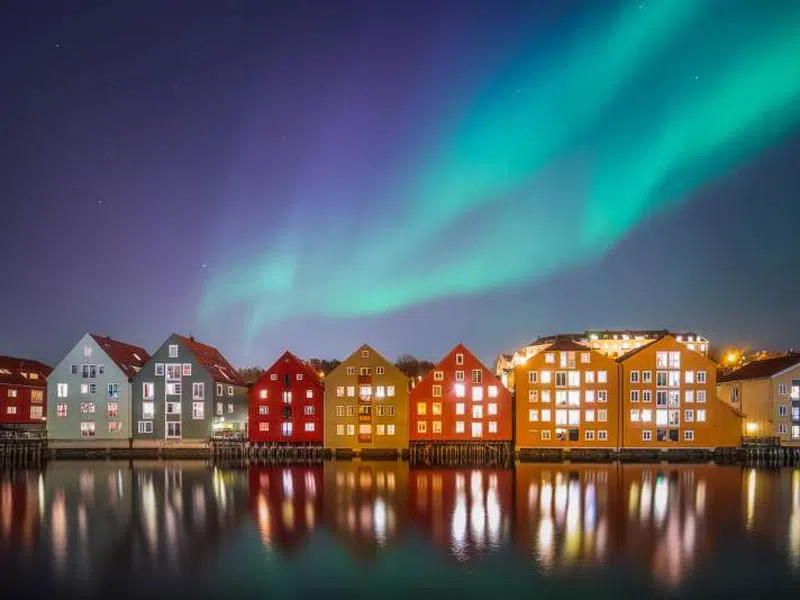
Trondheim
Norwegian Fjords and Arctic Wonders from Trondheim!Set sail on a captivating cruise from Trondheim, Norway, a historic city nestled at the mouth of the Nidelva River. Known for its colorful wooden houses, medieval Nidaros Cathedral, and vibrant cultural scene, Trondheim offers a picturesque departure point for exploring the stunning Norwegian fjords and the Arctic coastline. Experience its unique blend of history and natural beauty before embarking on a journey filled with breathtaking landscapes and unforgettable discoveries at sea.
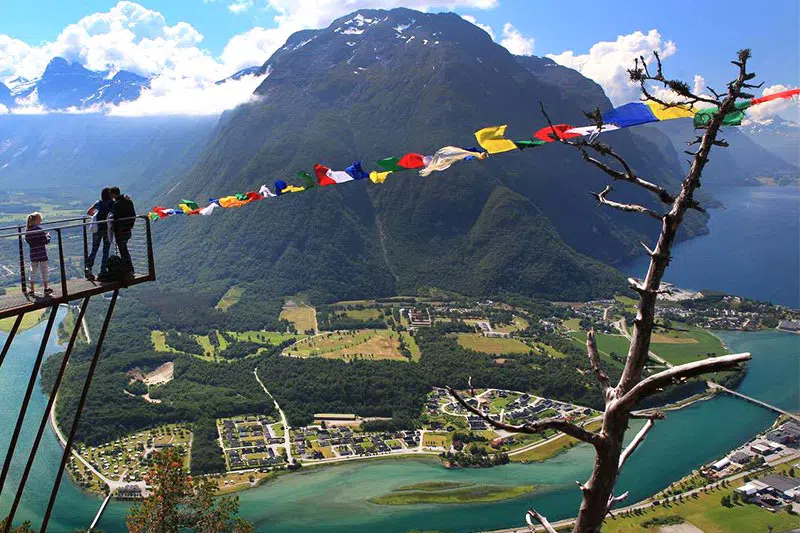
Andalsnes
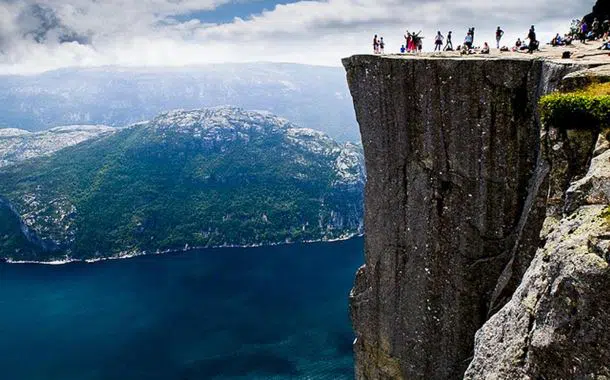
Stavanger
Stavanger is a Norwegian city located in the county of Rogaland, and it is a very ancient city. It seems that the first settlements took place about 10,000 years ago. It received city status in the 12th century, and in the same period, it became a bishop's seat, acquiring great importance from a religious point of view. It lost this role following the Protestant Reformation of 1536. Stavanger experienced the economic boom in the late 1960s: this area, in fact, became an important oil extraction base in the North Sea.
From a cultural point of view, Stavanger is a very active city: it was chosen, in fact, in 2008 as European Capital of Culture. Stavanger is a popular tourist destination thanks to the breathtaking landscapes that the city itself and the surrounding areas offer.
You cannot miss the Preikestolen, a rock 604 meters high from which you can enjoy a breathtaking view and which is visited every year by an ever-increasing number of tourists.
The city is very lively and full of attractions for leisure, including restaurants, clubs, and shops. The historic center is quite small and it is worth visiting on foot to fully enjoy the positive atmosphere that you breathe. Visiting Stavanger via a cruise in Northern Europe is one of the best ways to fully enjoy the landscape and to experience direct contact with nature.
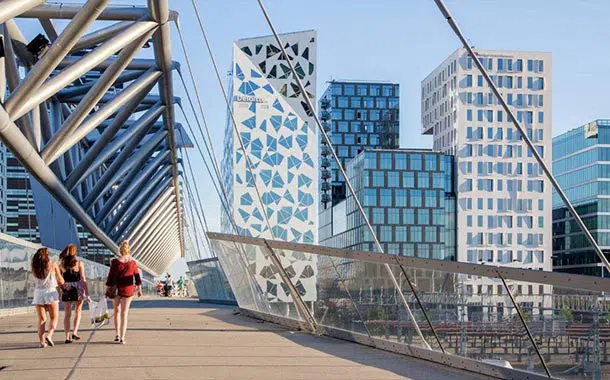
Oslo
Oslo, located in the south-eastern part of the country, is the capital and largest city of Norway. Oslo is a lively city that perfectly blends its rich history with modern urban development, making it a dynamic and attractive place to live and visit.
It was founded around 1040 by King Harald Hardrada and became the capital of the country in 1299 under King Håkon V. The city was partially destroyed by a fire in 1624 and its reconstruction began under the reign of King Christian IV. King Christian IV renamed the city Christiania. The original name, Oslo, was restored only in 1925. Oslo is known for its beautiful natural landscapes, including forests, hills and lakes. Thanks to its beautiful landscapes, it is possible to practice numerous outdoor activities such as hiking, skiing and canoeing.
These unique features make the city an ideal destination for nature lovers. The city is home to several world-renowned museums, including the Viking Ship Museum, the Munch Museum (dedicated to the works of Edvard Munch, famous for “The Scream”), and the National Gallery. Don't miss the opportunity to visit one of these museums and share your photos with your friends! Every year, Oslo hosts one of the most important cultural events, the Nobel Peace Prize, which is awarded annually in the city at the City Hall.

Oslo
Oslo, located in the south-eastern part of the country, is the capital and largest city of Norway. Oslo is a lively city that perfectly blends its rich history with modern urban development, making it a dynamic and attractive place to live and visit.
It was founded around 1040 by King Harald Hardrada and became the capital of the country in 1299 under King Håkon V. The city was partially destroyed by a fire in 1624 and its reconstruction began under the reign of King Christian IV. King Christian IV renamed the city Christiania. The original name, Oslo, was restored only in 1925. Oslo is known for its beautiful natural landscapes, including forests, hills and lakes. Thanks to its beautiful landscapes, it is possible to practice numerous outdoor activities such as hiking, skiing and canoeing.
These unique features make the city an ideal destination for nature lovers. The city is home to several world-renowned museums, including the Viking Ship Museum, the Munch Museum (dedicated to the works of Edvard Munch, famous for “The Scream”), and the National Gallery. Don't miss the opportunity to visit one of these museums and share your photos with your friends! Every year, Oslo hosts one of the most important cultural events, the Nobel Peace Prize, which is awarded annually in the city at the City Hall.
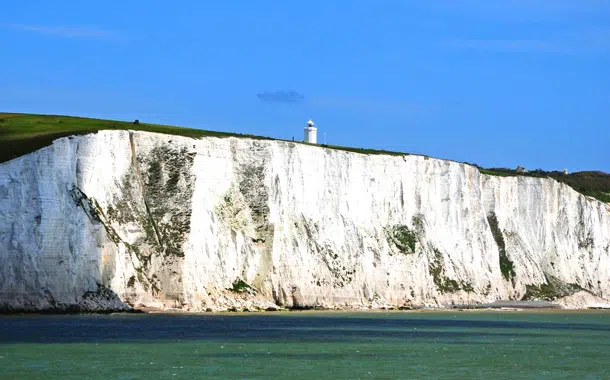
Dover
Just 21 miles from the European mainland (the French cliffs are visible on a clear day), it is the main passage through the English Channel.
History of DoverEnveloped by the passage of time, Dover stands as a monumental beacon of Britain's heritage. Situated at the closest point to continental Europe, it has served as the gateway to England for centuries. The iconic White Cliffs of Dover, symbolic of hope and freedom, have witnessed the ebb and flow of conquerors, traders, and travelers. Central to its historical narrative is Dover Castle, known as the "Key to England," boasting an extensive history dating back to the Iron Age and later fortified by the Romans and Normans. This town is not just a witness but a storyteller of England's tumultuous history.
Climate in DoverDover's climate is characterized by its mildness, a trait particularly appealing to those seeking to escape extreme weather conditions. Summers are pleasantly warm without being oppressively hot, with average temperatures hovering around 20°C (68°F), making it an ideal time for exploring. Winters are moderate, with temperatures rarely falling below freezing. This temperate climate ensures that Dover can be enjoyed year-round, offering a comfortable environment for all its visitors.
Attractions and Places to VisitDover is not just a historical gem but also a treasure trove of natural beauty and cultural sites. Beyond the White Cliffs, Dover Castle stands as a formidable reminder of the past, offering breathtaking views and a deep dive into history. The Secret Wartime Tunnels weave beneath the castle, offering an immersive experience into WWII strategies. For nature lovers, the Samphire Hoe Country Park, created from the material dug to build the Channel Tunnel, offers serene walks and stunning vistas. Each site in Dover tells its own unique story, inviting exploration and discovery.
Local Cuisine and Specialty ProductsThe culinary landscape of Dover is as rich and varied as its history. Known for its fresh seafood, the town boasts dishes like Dover sole, celebrated worldwide for its delicate taste. Local pubs and restaurants also offer traditional English fare, from hearty stews to the classic fish and chips, often with a contemporary twist. Regional produce, like Kentish apples and artisanal cheeses, add to the gastronomic experience, making Dover a must-visit for food enthusiasts.
Concluding Remarks: Embark on a Cruise from DoverEmbarking on a cruise from Dover is not just a journey; it's an adventure steeped in history, natural beauty, and culinary delights. This port, renowned for its strategic importance and breathtaking views, serves as the perfect gateway to exploring the British Isles and beyond. With its convenient location, temperate climate, and rich cultural tapestry, Dover invites cruisers to begin their voyage in a city that promises an unforgettable experience. Whether you're drawn by the call of history, the allure of gastronomy, or the simple joy of scenic landscapes, Dover is a destination that transcends expectations, making it an ideal starting point for your next cruise adventure.

Rotterdam
Rotterdam has a booming energy, with an excellent nightlife, a multicultural community, a gritty arts scene and an offer of excellent museums.
Rotterdam, the Netherlands' 'second city', was heavily bombed during the Second World War and spent decades before reconstruction. You won't find the classic medieval Dutch architecture here – it was swept away along with the other debris and debris of war. In its place is an architectural aesthetic that is unique in Europe, a perpetually progressive approach to construction that is clearly a result of the city's post-war, postmodern philosophy. In fact, Rotterdam is known as a city of architecture. In the few square kilometers of the city center you have a complete overview of what the twentieth century produced in terms of modern architecture.
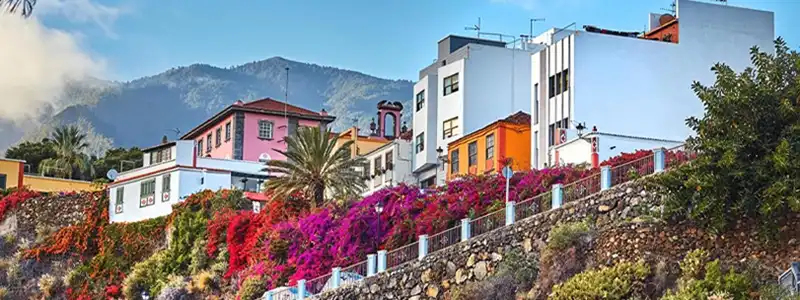
Santa Cruz De La Palma
Canary Island Charms from Santa Cruz De La Palma!Set sail on a delightful cruise from Santa Cruz de la Palma, the charming capital of La Palma in the Canary Islands. Known for its beautiful colonial architecture, lush landscapes, and tranquil atmosphere, this port offers a picturesque departure point for exploring the enchanting Canary Islands and the wider Atlantic. Experience its unique blend of history and natural beauty before embarking on a journey filled with relaxation, adventure, and unforgettable island discoveries.

Santa Cruz de Tenerife
Santa Cruz de Tenerife, the capital of Tenerife, is located in the north-east of the island. Its pleasent climate and commercial areas make the city the perfect place for walking and enjoying long hours of relaxation. There are lots of things to visit in the city such as its avenues, parks and Henry Moore's most famous sculptures, hidden treasures and historic buildings such as the Church of the Conception or the Carta Palace.
Do not miss the opportunity to taste local cuisine. Santa Cruz de Tenerife is a beautiful port located in Tenerife, the largest of the western islands of the Canary Islands archipelago. In the area around the port, there are wide avenues, squares, exotic green areas and some examples of modern architecture. At the heart of the city, near the sea, there is Plaza de España, built in the mid-20th century and once the site of the San Cristobal Castle (16th century).
The oldest part of the city is rich in religious monuments. The construction of the Church of San Francisco, one of the best examples of the Baroque style, began in the 17th century. The Church of Pilar, dated back to the 18th century, stands on the remains of an ancient temple. The city has also some green areas filled with exotic tree species. The Garcia Sanabria Park houses an important outdoor Sculpture Museum.
Another not to be missed place is the Maritime Park, a recreational area designed by architect César Manrique and located in the old Canary Islands commercial basin. Also known as the Black Castle, this circular defensive bastion was built in the first half of the 17th century with volcanic stones. From a naturalistic point of view, Tenerife is an island of contrasting landscapes. The wide beaches of fine sand in the south of the island give way to lush vegetation in the north.
Every year, the outfits of the island's capital prepare to host Carnival, declared International Tourist Interest and one of the most spectacular in Spain. Its privileged location makes it possible to enjoy beautiful beaches such as Las Teresitas, get to know the city of San Cristóbal de La Laguna, declared a UNESCO World Heritage Site, or visit Teide National Park, the symbol of the island.
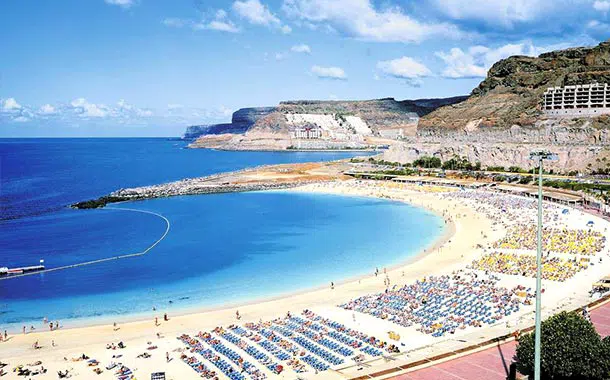
Las Palmas
Located in the Atlantic Ocean 200 km from the African Coast, Gran Canaria has one of the most beautiful tropical landscapes. The island has wide and beautiful golden sand beaches, endless dunes, large indentations with vegetation and charming villages. In this majestic area, you can visit towns that has all kinds of services and amenities, such as in Las Palmas, with large shopping areas and a lively nightlife. You will have the opportunity to practice any water sport: diving, surfing and windsurfing.
Conversely, those who prefer other sports will have the opportunity to go hiking, climbing, or cycling. The island is also an ideal destination for golf lovers, as it has a wide range of excellent courses. Gran Canaria has excellent cuisine and the variety of fun traditional festivals, and theme parks. In short, it is an ideal place for a great island vacation.
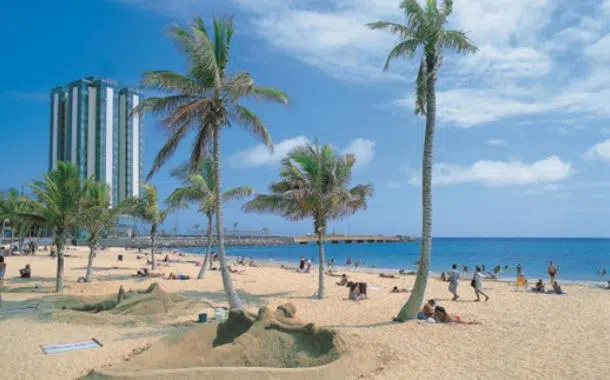
Arrecife
The capital of Lanzarote Island, in Canary Island, Arrecife was originally a small fishing village that now primarily relies on tourism. Lanzarote is one of the most wild and natural islands of the Canary and is of volcanic origin. Arrecife, the capital of Lanzarote, since the second half of the 19th century, is now the administrative and commercial center of the island.
Arrecife is a lively and cosmopolitan city full of culture and history, located on the eastern-central coast of the island. Initially known as a small fishing village in the 15th century, the area continued to grow until it became the capital of the island in 1852. Today, it is known as a wonderful holiday and shopping paradise. The city presents itself to travelers as a peaceful, cheerful and clean town. In its harbor, which is an area of intense commercial activity, two large fortresses, San Gabriel and San Jose, stand as reminders of the constant pirate attacks.
Other interesting monuments include the Castle of San Gabriel, built offshore and connected to the city by drawbridge, the San Juan Castle, and the Castillo del Hambre. Inside the Castello del Hambre, there is the international Museum of Contemporary Art, which exhibits works by the great artist Cesar Manrique.
The center of Arrecife is surrounded by some of the city’s best tourist attractions, such as the Parish of San Ginés Obispo and the shopping district of Calle Real. Heading north along the Coast, you will find the city’s ports: Puerto Naos, a fishing port, and the main port called Puerto de los Marmoles, the third most important port in the Canary Islands.
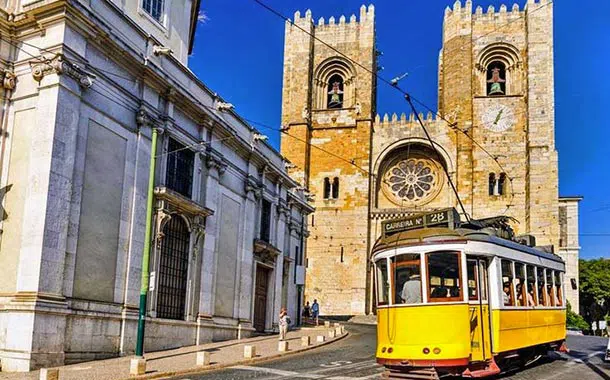
Lisbon
Perched on steep slopes overlooking the Tagus River, Lisbon offers all the pleasures you'd expect from Portugal's main attraction.
The capital of Portugal, Lisbon (in Portuguese Lisboa) has experienced a great rebirth in recent years, with a lively and flourishing contemporary culture. Perched on the coast of the Atlantic Ocean, Lisbon is one of the rare European cities that face the ocean and use water as an element that defines the city. Lisbon enchants travelers with its white limestone buildings, intimate alleys and an ancient charm that makes it a popular destination all year round.

Dover
Just 21 miles from the European mainland (the French cliffs are visible on a clear day), it is the main passage through the English Channel.
History of DoverEnveloped by the passage of time, Dover stands as a monumental beacon of Britain's heritage. Situated at the closest point to continental Europe, it has served as the gateway to England for centuries. The iconic White Cliffs of Dover, symbolic of hope and freedom, have witnessed the ebb and flow of conquerors, traders, and travelers. Central to its historical narrative is Dover Castle, known as the "Key to England," boasting an extensive history dating back to the Iron Age and later fortified by the Romans and Normans. This town is not just a witness but a storyteller of England's tumultuous history.
Climate in DoverDover's climate is characterized by its mildness, a trait particularly appealing to those seeking to escape extreme weather conditions. Summers are pleasantly warm without being oppressively hot, with average temperatures hovering around 20°C (68°F), making it an ideal time for exploring. Winters are moderate, with temperatures rarely falling below freezing. This temperate climate ensures that Dover can be enjoyed year-round, offering a comfortable environment for all its visitors.
Attractions and Places to VisitDover is not just a historical gem but also a treasure trove of natural beauty and cultural sites. Beyond the White Cliffs, Dover Castle stands as a formidable reminder of the past, offering breathtaking views and a deep dive into history. The Secret Wartime Tunnels weave beneath the castle, offering an immersive experience into WWII strategies. For nature lovers, the Samphire Hoe Country Park, created from the material dug to build the Channel Tunnel, offers serene walks and stunning vistas. Each site in Dover tells its own unique story, inviting exploration and discovery.
Local Cuisine and Specialty ProductsThe culinary landscape of Dover is as rich and varied as its history. Known for its fresh seafood, the town boasts dishes like Dover sole, celebrated worldwide for its delicate taste. Local pubs and restaurants also offer traditional English fare, from hearty stews to the classic fish and chips, often with a contemporary twist. Regional produce, like Kentish apples and artisanal cheeses, add to the gastronomic experience, making Dover a must-visit for food enthusiasts.
Concluding Remarks: Embark on a Cruise from DoverEmbarking on a cruise from Dover is not just a journey; it's an adventure steeped in history, natural beauty, and culinary delights. This port, renowned for its strategic importance and breathtaking views, serves as the perfect gateway to exploring the British Isles and beyond. With its convenient location, temperate climate, and rich cultural tapestry, Dover invites cruisers to begin their voyage in a city that promises an unforgettable experience. Whether you're drawn by the call of history, the allure of gastronomy, or the simple joy of scenic landscapes, Dover is a destination that transcends expectations, making it an ideal starting point for your next cruise adventure.

Rotterdam
Rotterdam has a booming energy, with an excellent nightlife, a multicultural community, a gritty arts scene and an offer of excellent museums.
Rotterdam, the Netherlands' 'second city', was heavily bombed during the Second World War and spent decades before reconstruction. You won't find the classic medieval Dutch architecture here – it was swept away along with the other debris and debris of war. In its place is an architectural aesthetic that is unique in Europe, a perpetually progressive approach to construction that is clearly a result of the city's post-war, postmodern philosophy. In fact, Rotterdam is known as a city of architecture. In the few square kilometers of the city center you have a complete overview of what the twentieth century produced in terms of modern architecture.
